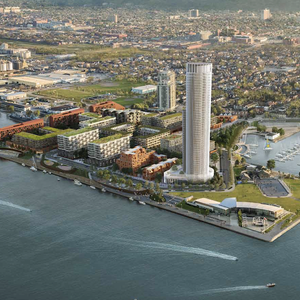Severe Impact on Mental Health Thanks to the Canadian Real Estate Market
Severe Impact on Mental Health Thanks to the Canadian Real Estate Market Both bank balances and mental health are being impacted by the housing market. Most recent, and also would-be new homeowners don’t really need reminding that the Canadian real estate market has shattered price records, spectacular bidding battles have become commonplace, as well as supply has tightened to unprecedented levels in the last two years. This February, the average home price in Canada broke the $800,000 barrier for the first time in human history. As per the latest stats from the Canadian Real Estate Association(CREA), homebuyers in Canada can now expect to spend $816,720 for a property, up 20.6 percent from last year. Home values in the Greater Toronto Area (GTA) rose so high that almost all young people — including those with high-paying careers — only could afford them if they had been among the fortunate few who got down payment gifts from their parents’ bank. The GTA experienced another month of double-digit price rises in February. The average cost of a property in the area has risen to a difficult-to-believe $1,334,544, up 27.7% year over year and 7.3 percent month over month. This implies that purchasing a standard detached home in the GTA would now need a down payment of $359,441. If you want to live in Toronto proper, the cost climbs to $414,798. Yikes. Former GTA residents have recently been enticed to relocate to more inexpensive pastures within the Maritimes. Nonetheless, this province-hopping tendency is really not helping locals in the property market, since newcomers drive up house rates, pricing countless individuals out. The consequences of a failing housing market, one that has been labeled a catastrophe, are having an unavoidable impact on mental health for many people. Despite the fact that the ongoing epidemic has made Canadians’ mental health more vulnerable than ever before. Homeownership, previously considered a life accomplishment in Canada, would no longer be a regular phenomenon. Indeed, one-third of Canadians under the age of 40 have given up on the idea of owning, as per RBC’s Spring Housing Poll from last year. In the year after, prices have so far only risen to record-breaking levels throughout the majority of the nation. Housing expenses are worrying consumers throughout the country, as per new RBC Annual Home Ownership Poll data. Almost half of the respondents (47%) say that thinking about purchasing or saving for a home as prices increase is stressing their relationship, while the majority (54%) are worried about having to buy a property further away from family and friends. Furthermore, 30% said they would have to and may have to live with their parents longer due to the rising cost in order to save enough money to buy a property. Despite the immense differences in time, younger people invariably compare themselves to their parents, who’ve been able to purchase homes while they were their age, when housing prices and mortgages were far more affordable. “Many young people are feeling like home-ownership is an impossible reality,” says Dr. Saunia Ahmad, Director and Clinical Psychologist at the Toronto Psychology Clinic. “The critical thing to remember is that a house is supposed to be a place where you can set your roots and have a long-term place to live. It’s not just that a real estate investment can make you money; stocks can do that too. With real estate, you have a home and there’s a psychological sense of safety in that.” House-hunting is really not exactly a peaceful procedure for individuals who really do attempt to enter the market, particularly if they are on a restricted budget. “The bidding wars have been demoralizing for people,” says Ahmad. “Think about the amount of time looking for houses, getting excited, and then not getting it.” According to Ahmad, this might have a significant impact on one’s health. Most individuals who have even considered purchasing in this rising market would surely agree. “It has been tough on some of my clients,” says Toronto-based realtor Ian Matthews. “In the past few months, the inventory has been so low that it has been very discouraging for some, with many properties selling with 10 or more offers. I think this, combined with two years of Covid lockdowns, and recent news from Ukraine has caused some people to feel like they have no control of their future in a crazy time.” Numerous Toronto houses, particularly those below $2 million, are selling with multiple offers or pre-emptive bids just one or two days after being listed, as per Matthews. He additionally mentions the recent tendency of real estate brokers offering houses at ridiculously low prices in order to garner more attention from potential purchasers. “This is causing buyers to rush to see places with hope, many of which are priced to go $500K or more over asking,” says Matthews. “When this happens week in and week out, it becomes really discouraging. I have been trying to manage expectations for clients and have been encouraging them to take time off to reset when it is needed.” Matthews claims that some of his clients are now house hunting in spurts as a result of his advice. “They’re seeing a number of properties in a few weeks and then vanishing for a period of time,” he says. “I think for a lot of buyers, it has become a bit of a rollercoaster and it can get pretty emotional, so taking breaks is often needed.” Move-up purchasers are also under pressure. However, first-time purchasers aren’t the only ones who are concerned. “I have a few clients looking to buy and then sell,” says Matthews. “They are concerned that they will buy at these prices and the market will shift, leaving them in an awkward position. Buying in this market and not being able to sell in this environment could make their purchases unaffordable. I am hoping the spring market will bring with it more inventory which will offer more stability. Though I don’t forecast prices coming
Severe Impact on Mental Health Thanks to the Canadian Real Estate Market Read More »













